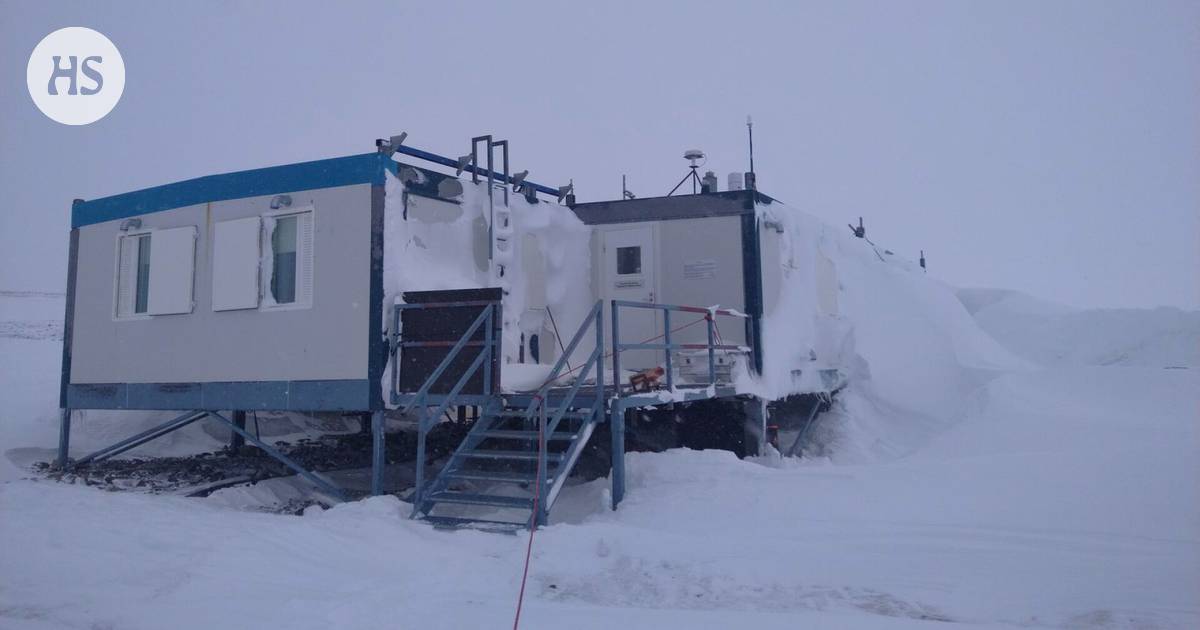Cold, stormy, distant. . . Head of Antarctic operations at the Finnish Meteorological Institute Mika Kalakoski describes the ice-covered continent as unpredictable.
The climate is the harshest in the world. The weather can change suddenly and the force of the wind can reach hurricanes. Schedules may shift by several days.
For snow and ice scientists, Antarctica is like a pure natural laboratory. Antarctica has not been warred, mined for minerals or polluted. There aren’t many corners like that in the world.
On top of that, the entire continent is protected and dedicated to science.
As such, the countries want to keep Antarctica, although there is pressure for other uses as well. A hot topic is travel. Tourists want to go to Antarctica to see penguins and whitish-white glaciers, which can leave an indelible impression on the sensitive nature.
The possible regulation of tourism is the subject of the Antarctic meeting of parties starting in Helsinki on Sunday, where the states will consider the rules of the game in the region. The big question is climate change and its effects in the Arctic region.
Fact
Climate change and tourism are hot topics in Helsinki
-
The world’s Antarctic experts will gather in Helsinki from 28 May to 8 June 2023. The Meeting of the Parties to the Antarctic Convention (ATCM) will be held in Finland for the first time.
-
The Antarctic Treaty concluded in 1959 consecrates the area to peaceful research.
-
The agreement freezes territorial claims and prohibits military activity in Antarctica. The agreement also prohibits nuclear explosions and bringing nuclear material to Antarctica.
-
Finland joined the agreement in 1984 and was accepted as a full member in 1989. There are 29 full members in total.
-
The big topics of the Helsinki meeting are climate change and its effects in the Antarctic region and Antarctic tourism.
-
The meeting is to adopt a declaration expressing concern about climate change and its effects in the Antarctic region.
Climate change also felt in Antarctica, because according to studies, the glaciers are weakening more than previously thought. For example, ice has been broken off from an ice shelf, i.e. a mass of ice floating in the sea, into a gigantic iceberg.
The Finnish Meteorological Institute’s Kalakoski has been taking Finnarp research expeditions to Antarctica since 1999. He has been to Antarctica 20 times and experienced the change sensory-wise.
“The storms have intensified, and the snow load has increased,” says Kalakoski.
When he started leading the expeditions, the gale-force winds generally blew 22 meters per second for three or four days. In recent years, the intensity of storms has been 45, even 55 meters per second for ten days.
“Snow can fall halfway up the building or up to the roof. Then everything is white and it’s easy to get lost,” says Kalakoski.
During a storm, the researchers stay at the research station and make their measurements during the day at the most. You don’t go camping.
The head of Finland’s Antarctic operations, Mika Kalakoski, has been involved in organizing research trips to Antarctica since 1999. In the background, the Finnish research station Aboa.
Although research trips are made in November–February during the Antarctic summer, the conditions are demanding. Kalakoski doesn’t want to call the trips adventures, because it’s primarily about research and maintenance work on the research station and equipment.
Today’s explorers’ trips are designed so that the risks are as small as possible.
“This is continuous action, no heroics,” says Kalakoski.
Kalakoski’s task is to ensure that the researchers have the best possible conditions to work. That’s why the expeditions also include a doctor and a cook.
The Finnish research station Aboa in February 2023.
Weather station maintenance on a glacier in Antarctic summer 2023.
Finns started in Antarctica 35 years ago. Our own research station Aboa was completed in 1989. It is located about 130 kilometers from the coast on a nunatak called Basen, i.e. a mountain peak protruding from the glacier.
The expeditions in their current form began in 1999, when Kalakoski started on a two-month vacation.
“It was a chaotic trip. We went to Antarctica and came back by ship from Cape Town. The ship journey took a couple of weeks in one direction and rocked violently. Aboa was smaller than now, and the group was too big. It was really good to start developing the operation,” says Kalakoski.
Nowadays, transitions are primarily made by flying together with research expeditions from other countries.
The Finnish research station was expanded in 2002. Now, according to Kalakoski, Aboa is a good place to live and work. Space is needed, as the trips last three months at most. Then mental endurance is also put to the test.
The Finnish expedition loads cargo onto the Twin Otter plane at the Norwegian research station, from where the journey continued to Aboa in November 2022.
Research station Aboa after the storm.
Of course, there is a sense of adventure in travel. Even a trip 15,000 kilometers away from Helsinki is an experience, especially for first-timers.
Stress can be caused by uncertainty about schedules and uncertainty about whether you can get to the terrain for field work. Small spaces can be oppressive. Despite the confirmation camps, expectations are not always met. It can cause conflicts.
“We’ve had nice expeditions, and good memories have remained,” says Kalakoski diplomatically.
There have been near-miss situations, such as broken bones or stitching wounds in accidents.
For example, Kalakoski broke his ribs after a snowmobile fell on a mountainside. Once, a rockslide surprised the researchers on the mountain, but no one was trapped under the fist-sized stones.
Antarctica does not belong to any state and has no original or permanent settlement. Penguins, albatrosses, petrels and seagulls live on the islands and on the mainland. There are whales, sea lions and seals in the sea.
Emperor penguins on the Antarctic coast.
The Antarctic Treaty emphasizes peaceful research work, where the most important thing is environmental protection.
According to Kalakoski, international cooperation works. Without it, fieldwork in different parts of Antarctica would be almost impossible.
The upheavals of the world are still felt even on the glacier. Previously, Finland used Russian planes through a field licensed by Russia, but the 2022 expedition traveled to Antarctica on a flight organized by the Norwegian Polar Institute.
“We found good options to reorganize the trips,” says Kalakoski.
At Kotivuori Basen, the Finns cooperated with the Swedes.
Bad weather or technical failure can surprise anyone. Then guests can come unexpectedly.
Once a British plane broke down and the pilots were on Aboa for five days. Last season, the Finns accommodated ten people, including Germans, South Africans and Canadians, because the flight weather at the destination got worse. In return, the Finns have received international aid.
The rugged slopes of the Finns’ home mountain, Basen, in Antarctica.
#Environment #Climate #change #expeditions #Antarctica #dangerous #Mika #Kalakoski #tells #work #extreme #conditions









